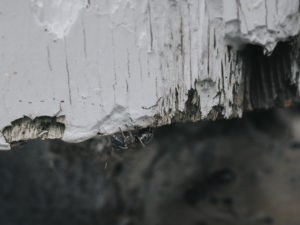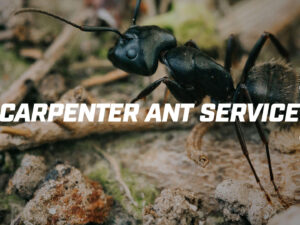
Ants may be small, but their impact on our ecosystems and homes can be substantial. If you live or work in Upstate New York, chances are you’ve encountered these industrious insects in your yard, garden, or even inside your home. While ants play a vital role in the environment, like aerating soil and recycling organic material, not all interactions with them are pleasant. Some species can cause structural damage, contaminate food, or even lead to bites and stings.
This guide will provide an overview of the most common ant species found in Upstate NY, how to identify them, their behavior, and how to handle them if they become unwanted guests.
Why Understanding Local Ant Species Matters
Knowing what ant species you’re dealing with can help you effectively address any issues they cause. Different species have different behaviors, nesting habits, and food preferences, which means the solutions for managing them will vary. For example, carpenter ants require a completely different control strategy than sugar ants. Proper identification is the first step to successfully preventing or managing an infestation.
Identifying Common Ant Species in Upstate NY
1. Carpenter Ants (Camponotus spp.)
Perhaps the most infamous ant species in Upstate NY, carpenter ants are known for their ability to cause structural damage. Though they don’t eat wood like termites, they excavate it to create tunnels for nesting, making them a potential threat to wooden structures.
How to Identify Carpenter Ants:
- Size: Large, ranging from 1/4 inch to 1/2 inch.
- Color: Black or reddish-black.
- Behavior: Frequently found near damp, decaying wood. May forage inside homes, especially at night.
Signs of Infestation:
- Sawdust-like material (frass) near wooden structures.
- Rustling sounds in walls or ceilings.
- Sightings of winged carpenter ants, especially in the spring.
How to Manage Them:
Seal cracks and crevices around your home, fix any moisture issues, and remove decayed wood. If you suspect a serious infestation, professional pest control may be necessary.
2. Pavement Ants (Tetramorium immigrans)
Pavement ants are the tiny insects you’ll often see swarming sidewalks, driveways, and patios. These ants are not as destructive as carpenter ants but can still be a nuisance, especially if they find food sources indoors.
How to Identify Pavement Ants:
- Size: Small, around 1/8 inch.
- Color: Dark brown to black.
- Behavior: Often form small mounds of excavated soil between cracks in pavement.
Signs of Infestation:
- Ant trails leading to indoor food sources.
- Small piles of soil or sand near pavement cracks.
How to Manage Them:
Keep food tightly sealed, wipe up crumbs, and seal entry points. Baits are effective for addressing the colony.
3. Odorous House Ants (Tapinoma sessile)
Odorous house ants earned their name due to the strong, rotten-coconut smell they emit when crushed. While they don’t pose a structural threat, they can quickly become a nuisance if they invade your kitchen.
How to Identify Odorous House Ants:
- Size: Small, around 1/8 inch.
- Color: Brown or black.
- Behavior: They move in erratic trails and are most often found near food sources.
Signs of Infestation:
- Large trails of ants forming near sugary or greasy foods.
- A noticeable odor if ants are crushed.
How to Manage Them:
Sanitation is key. Keep counters clean, store food securely, and use ant baits for effective control.
4. Field Ants (Formica spp.)
Field ants are commonly found in gardens or yards. These ants are not a structural threat, but their large mounds can be unsightly in your lawn. They may also bite if their nest is disturbed.
How to Identify Field Ants:
- Size: Medium to large, 1/4 inch or larger.
- Color: Varies from black and brown to red.
- Behavior: Most active during the day and typically found in outdoor spaces.
Signs of Infestation:
- Visible dirt or grass mounds in the yard, often more developed after rain.
How to Manage Them:
Spot treat the mounds with eco-friendly sprays or call a pest control expert for large-scale infestations.
5. Pharaoh Ants (Monomorium pharaonis)
Pharaoh ants are known for their tenacity and tendency to form multiple colonies through a process called budding. While they’re small, they can contaminate food and spread diseases, making them a concern in homes, hospitals, and restaurants.
How to Identify Pharaoh Ants:
- Size: Tiny, about 1/16 inch.
- Color: Light yellow to reddish with a darker abdomen.
- Behavior: They form large colonies and are particularly attracted to sugary foods.
Signs of Infestation:
- Tiny ants trailing in kitchens or pantries.
- Difficulty in eliminating the population due to budding behavior.
How to Manage Them:
Avoid spraying pesticides directly; instead, use slow-acting baits to ensure the entire colony is eliminated.
Preventing Ant Problems in Upstate NY
Managing ants is easier with prevention. Here are some tips to keep your home and property ant-free:
- Seal Entry Points: Use caulk or weather stripping to close gaps in windows, doors, and foundations.
- Keep Food Secure: Store food in airtight containers and clean up crumbs or spills promptly.
- Fix Leaks: Since ants are attracted to moisture, repair any leaks or drips around your home.
- Maintain Your Yard: Remove decaying wood, rake leaves, and trim plants away from your home’s exterior.
- Use Barriers: Apply ant repellents around the perimeter of your home to deter outdoor ants from coming indoors.
When to Call a Professional
While some ant problems can be addressed with DIY methods, severe infestations may require professional pest control services. If you see large colonies, recurring infestations, or ants like carpenter ants that could cause structural damage, it’s time to bring in experts.
Take Charge of Ant Control Today
Understanding the most common ant species in Upstate NY allows you to take targeted, effective action to protect your home and property. Whether you’re dealing with destructive carpenter ants or the resilient pharaoh ants, identification and prevention are key.
If you’re unsure about the species or need professional advice, don’t hesitate to reach out to local pest control specialists for support.













